On the 8th, nature published an important achievement on mayorana zero energy mode For the first time, Chinese scientists have successfully regulated the large-area and highly ordered mayolana zero energy mode lattice array in the iron-based superconducting material lithium iron arsenic. This achievement is a milestone for the weaving of mayorana zero energy modes and topological quantum computation.
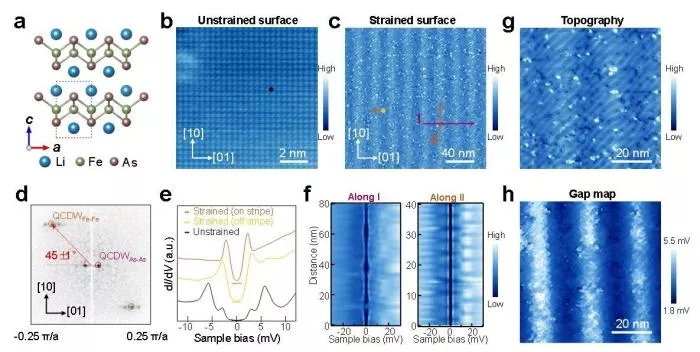
Characterization of biaxial charge density wave region of iron-based superconducting material lifeas. Drawings provided by Institute of physics, Chinese Academy of Sciences
chinanews Beijing, June 9 (reporter sunzifa) - the joint team led by academician gaohongjun of the Institute of physics of the Chinese Academy of Sciences (Institute of physics of the Chinese Academy of Sciences) recently observed a large-area, highly ordered and controllable mayolana zero energy mode lattice array in the iron-based superconducting material lithium iron arsenic, which has taken an important step towards the realization of topological quantum computing.
This scientific research achievement paper, which has made a milestone breakthrough in the research field of mayorana zero energy mode, was jointly completed by the gaohongjun research group of the Institute of physics of the Chinese Academy of Sciences, the jinchangqing research group and Professor wangziqiang of Boston College in the United States. It was published online in the international famous academic journal Nature on the night of June 8, Beijing time.
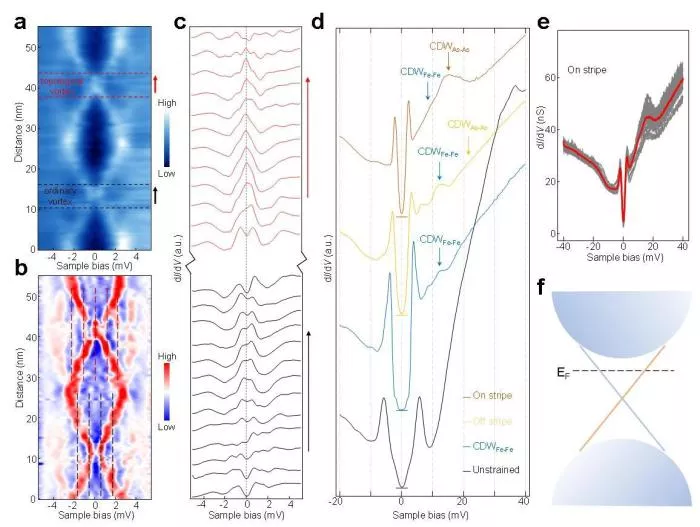
The generation mechanism of mayorana zero energy mode. Drawings provided by Institute of physics, Chinese Academy of Sciences
Gaohongjun said that the significance of their latest research lies in the realization of a large-area, highly ordered and controllable mayolana zero energy mode array for the first time, and the observation of mayolana zero energy mode interaction caused by regulation, which has laid a solid foundation for the next step to realize the weaving of mayolana zero energy modes and topological quantum computing.
What is "mayorana zero energy mode"
"Tao gives birth to one, gives birth to two, gives birth to three, and gives birth to all things", which is the ancient Chinese cognition and understanding of the world and expresses the construction process of all things from simplicity to complexity. For physicists, everything in the world can be split. In the end, physicists found that the so-called "everything" is actually composed of more than 60 kinds of basic particles. The exploration and discovery of these 60 kinds of basic particles and their properties is the "Tao" pursued by physicists.
Gaohongjun said that these elementary particles can be divided into bosons and fermions according to different statistical laws. For fermions, the antiparticle of most fermions is different from itself. This kind of fermions is called "Dirac fermions". There is another magical elementary particle whose antiparticle is itself. This elementary particle is called "mayorana fermion", which was put forward by Italian physicist etore mayorana in 1937. However, the academic community has not found the exact evidence for the existence of this particle so far.
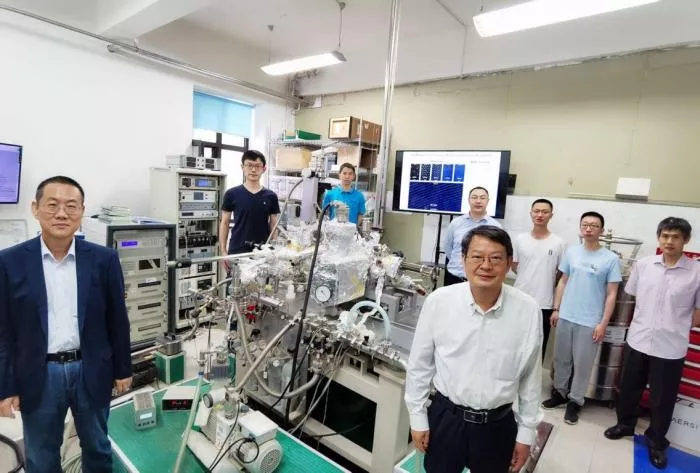
The scientific research team of the Institute of physics of the Chinese Academy of Sciences took a group photo in the laboratory. Drawings provided by Institute of physics, Chinese Academy of Sciences
In the field of condensed matter physics, another major branch of physics, theorists predict that particles similar to mayorana fermions may appear in solid materials, which are called "mayorana quasiparticles" or "mayorana zero energy modes". The statistical law of mayorana zero energy mode is neither boson nor fermion, but a unique non Abelian statistical law. This quasi particle weaving operation is considered to be an important way to realize fault-tolerant topological quantum computing.
Quantum computer follows the laws of quantum mechanics and is well known by the public because of its great advantages over traditional computers in dealing with complex problems. The main challenge of quantum computing is that quantum states are easily disturbed by the environment, resulting in decoherence, which will lead to continuous errors in the computing process. The nonlocal topological qubit composed of mayorana zero energy modes can solve the inevitable problem of quantum decoherence in quantum computing in principle, so it has attracted extensive attention in the academic circles.
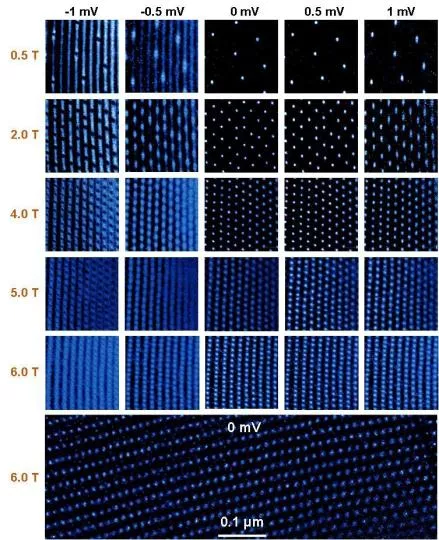
Large area ordered mayolana zero energy mode arrays are controlled by magnetic field. Drawings provided by Institute of physics, Chinese Academy of Sciences
What was the basis of previous research
Ligang, co-author of the paper and associate researcher of the Institute of physics of the Chinese Academy of Sciences, said that among the early mayorana zero energy mode carrier materials, the more representative material systems include semiconductor nanowires in the vicinity of conventional superconductors, magnetic atomic chains on the surface of conventional superconductors, and superconductor topological insulator interfaces. Such material systems often have some problems, such as difficulty in preparation and strict requirements for extremely low temperature.
In 2018, gaohongjun team cooperated with Dinghong team to observe mayolana zero energy mode in iron-based superconducting material iron tellurium selenium for the first time by using its self-designed and assembled international top-level scanning tunneling microscope / spectroscopy system with extremely low temperature and strong magnetic field. Compared with previous material systems, iron-based superconductors have the advantages of simple material and high observation temperature, and can observe pure mayolana zero energy modes.
Subsequently, aiming at the problem that the mayolana zero energy mode only exists in part of the flux vortex, the cooperation team further studied the mayolana zero energy mode in iron-based superconductors, found the micro physical mechanism of the existence of the mayolana zero energy mode, and clarified the topological nature of the mayolana zero energy mode.

Mayorana zero energy mode in a flux vortex. Drawings provided by Institute of physics, Chinese Academy of Sciences
Through further research, the research team observed the characteristics of the near quantized conductivity platform of mayolana zero energy mode in 2020, and gave the key experimental evidence of the existence of mayolana zero energy mode in iron-based superconductors. At the same time, they also observed mayolana zero energy mode in the flux vortex of iron phosphorus based superconductors and on a single iron atom, which greatly expanded the mayolana zero energy mode carrier platform.
However, these iron-based superconducting material systems still have the problems of heterogeneous components, disordered and uncontrollable flux vortex arrays, and low ratio of mayorana zero energy modes, which hinder their further research and application.

Academician gaohongjun, corresponding author of the paper, introduced the scientific research achievements. China News Agency Photographed by sun Zifa
What are the main findings of the latest research
Li Geng pointed out that how to break through the current research bottleneck, obtain a large-area, highly ordered and controllable mayorana zero energy mode array, and go further to topological quantum computing is one of the urgent problems to be solved in the field of iron-based superconducting mayorana.
In this recent study, the cooperative team conducted a detailed and in-depth study on the iron-based superconductor lithium iron arsenic. Using the powerful scanning tunneling microscope research platform and rich research experience accumulated over the years, they found experimentally that stress can induce a large-area, highly ordered and controllable mayolana zero energy mode lattice array.
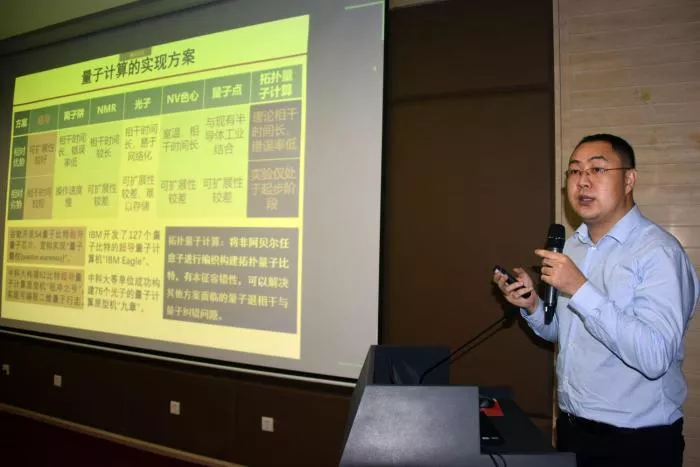
Ligang, the co first author of the paper and associate researcher of Institute of physics, Chinese Academy of Sciences, introduced the research results. China News Agency Photographed by sun Zifa
The major findings of this study mainly include four aspects:
First, the natural stress in the crystal can induce biaxial charge density wave fringes, with the wavelengths of 2.7 nm and 24.3 nm along the iron iron and arsenic lattice directions, respectively.
Second, the charge density wave with a wavelength of 24.3 nm has an obvious modulation effect on the superconducting energy gap. When a magnetic field perpendicular to the sample surface is applied, all the magnetic flux vortices formed are pinned on the charge density wave fringes in the arsenic arsenic direction with weak superconducting order, forming an ordered vortex array.
Thirdly, the existence of biaxial charge density wave reduces the crystal symmetry, thus changing the topological energy band structure near the Fermi level, making more than 90% of the flux vortex centers have mayolana zero energy modes, forming a highly ordered mayolana zero energy mode array.
Fourth, the ordered mayolana zero energy mode array can be regulated by the external magnetic field. With the increase of the magnetic field, the vortex spacing decreases, and the interaction between mayolana zero energy modes begins to highlight.
Gaohongjun concluded that the array and interaction of mayorana zero energy modes can be well regulated by the external magnetic field, and the mayorana zero energy mode weaving operation in solid materials can be used for topological quantum computation. Their research findings are of milestone significance for the weaving of mayorana zero energy modes and topological quantum computing, and an important step towards the realization of topological quantum computing.